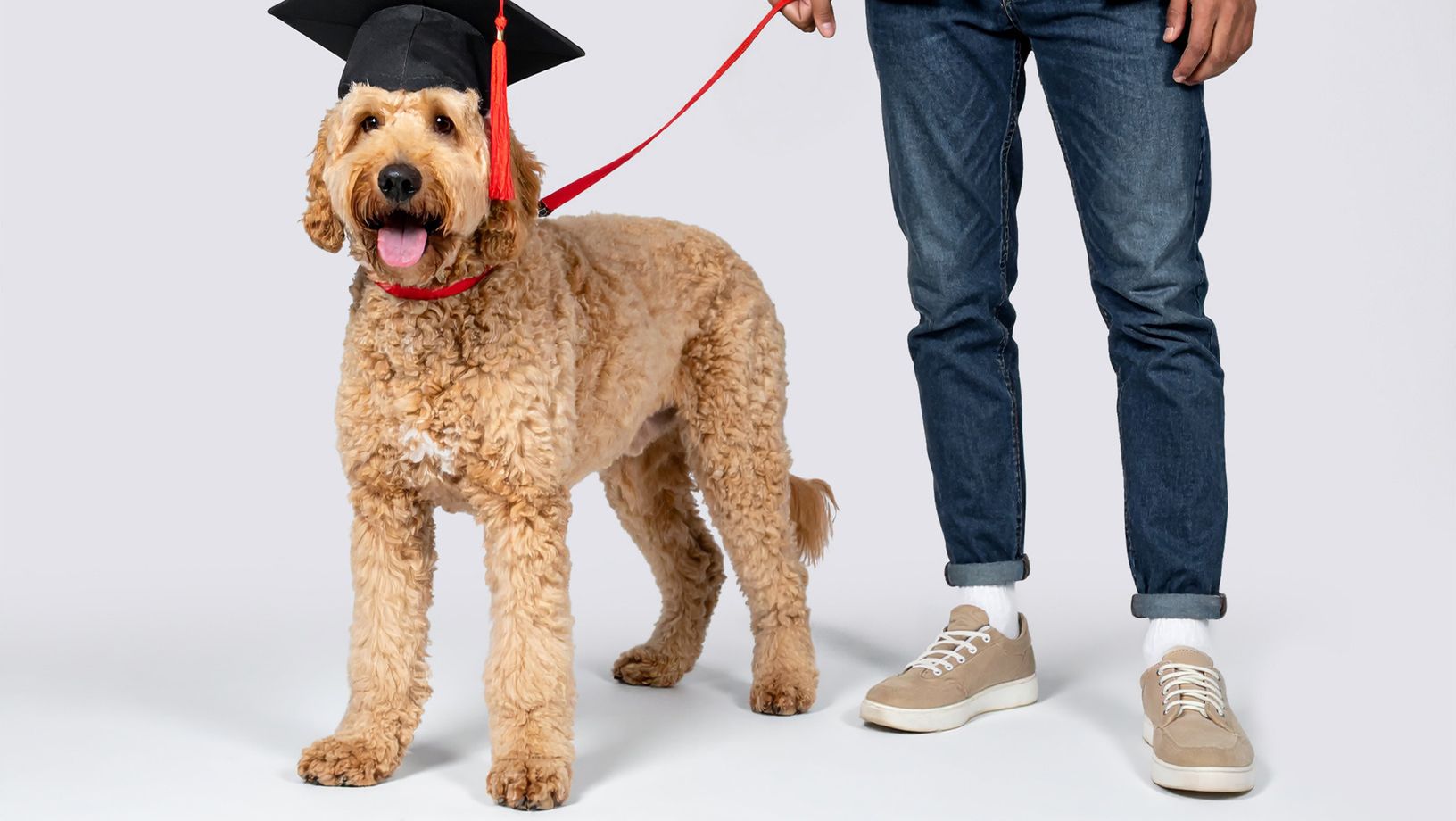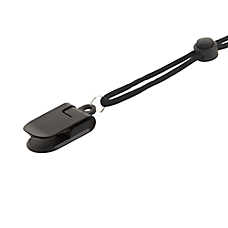Dog Training Essentials

In this Article
Dog training is the key to living a happy, healthy and joyful life with your pup. Training creates a life-long bond with your dog and helps them feel comfortable and confident in a variety of situations. Dog training is also essential to instilling the kinds of behaviors that foster a harmonious relationship between all the animals and humans in your household.
Dog training can be as simple as teaching your pup a few basic commands and socializing them for different situations. Advanced training includes developing skills for service dogs, therapy dogs, detecting scents, search and rescue, participating in competitions and solving complex problems.
Here are the essential things to know about training your dog.
The importance of dog training
Investing the time to train your dog is crucial for several reasons.
- Safety: Training is one of the best ways to ensure the safety of your dog and everyone they interact with. A well-trained dog is less likely to act aggressively with strangers and other animals, or to engage in problematic and dangerous behavior like biting or running into traffic.
- A harmonious home: Training helps dogs integrate smoothly into households and to live in harmony with their human family and other animals. When dogs understand basic commands and can follow house rules, it reduces stress for every person and every animal involved.
- Well-being: Dogs are intelligent animals that thrive on structure, mental stimulation and clear communication. Training provides all these elements, helping to prevent anxiety, boredom and unwanted behaviors. Training is also a great way to strengthen the bond between you and your dog, building trust and respect.
Key dog training methods
While training your dog may seem a little daunting at the start, there are a few key methods that can help you accomplish a lot with a little effort.
- Positive reinforcement: This is the most recommended and widely used method for training. It involves simply rewarding the behavior you want from your dog with treats, praise, toys or anything else that your pup loves. For example, when training your dog to “come here” when cued, they should get a treat and verbal praise each time they do it right to reinforce the behavior. Over time, your dog will learn that this behavior leads to good things, making them more likely to repeat it.
- Clicker training: Clicker training builds on positive reinforcement by using a small device that makes a clicking noise to mark the exact moment when your dog performs a desired behavior. By immediately offering a dog treat after the click, your dog will quickly associate the behavior with the reward. Clicker training is ideal for learning new behaviors and is often used when teaching tricks, complex tasks and obedience training.
- Negative reinforcement: This involves removing something unpleasant when your dog performs a desired behavior. One of the most common examples is when you’re trying to teach your pup to walk calmly beside you rather than straining and pulling. Over time, your dog will learn to appreciate that the pressure of the collar is released as soon as they’re willing to match your pace.
- Socialization: Though it’s not an actual technique, socialization is an essential part of dog training. It exposes your dog to different environments, people, animals and experiences from a young age to ensure that your pup develops into a well-adjusted, confident adult.
Basic commands
Dog training typically begins with several basic commands that every dog should know to ensure they are well-behaved, safe and manageable. These commands include:
- Sit: One of the first commands most dogs learn, “sit” is fundamental for controlling your dog’s behavior in various situations. It’s useful when you need your dog to calm down, wait patiently or focus on you.
- Stay: The “stay” command is essential for keeping your dog in place, whether for safety reasons or to prevent them from wandering off. Teaching your dog to stand and stay is particularly useful when opening doors, crossing streets or during mealtime.
- Come: Training your dog to come when called is crucial for their safety. Whether they’re playing off-leash or you need them to return to you quickly, the “come” command ensures they respond immediately.
- Down: The “down” command helps in managing your dog’s behavior, particularly in situations where calmness is needed, such as when guests arrive or when visiting the vet.
- Leave it: Teaching your dog to “drop it” or “leave it” is vital for preventing them from picking up or chewing on potentially harmful objects. It teaches them to ignore or drop something on command.
- Heel: “Heel” teaches your dog to walk beside you without pulling on the leash. This command is important for safe and enjoyable walks, ensuring your dog stays close and under control.
Dog training tips
Training a dog requires patience, consistency and understanding. Here are a few training tips for your pup to help make the process successful.
- Start early: The best time to start training is when your dog is a puppy. Early training helps build good habits and makes it easier to correct unwanted behaviors before they become ingrained.
- Keep it short: Dogs have relatively short attention spans, especially when they’re young. Keep training sessions short – about 5 to 10 minutes – and repeat them several times a day. This helps maintain your dog’s focus and prevents frustration.
- Be consistent: Consistency is essential for successful training. Make sure everyone in the household uses the same commands, rewards and training techniques to avoid confusing your dog.
- Be patient: Training takes time, and every dog learns at their own pace. Stay patient and avoid getting frustrated if your dog doesn’t learn as quickly as you’d like. Persistence and calm, positive reinforcement will yield the best results.
- Make it fun: keep your dog engaged and motivated by incorporating play and rewards into every training session. Training should be a fun and positive experience for both you and your dog.
- Address issues promptly: If your dog develops a behavioral issue, address it as soon as possible. Ignoring the problem or delaying corrective actions can lead to more serious problems down the line. In some cases, you may need to consult a professional dog trainer.
Professional dog training services
While it’s great to start training your dog on your own, professional dog training services offer valuable support, especially for addressing difficult behavioral issues or working on advanced skills. Professional trainers offer expertise, experience and tailored approaches to meet the specific needs of each dog and owner. Here’s how professional dog training services can benefit you and your dog:
- Expertise and experience: Professional trainers have extensive knowledge of dog behavior, training techniques and how to address specific issues. They can quickly identify the root cause of a problem and come up with effective solutions, which may save you a lot of time and frustration.
- Customized training plans: Every dog is unique and what works for one may not work for another. Professional trainers can create a customized training plan by evaluating your dog’s temperament, learning style and any behavioral issues. This tailored approach can increase the chances of success.
- Advanced training: If you’re interested in more advanced training, such as agility, obedience competitions or service dog training, professional trainers have the expertise to achieve these goals.
- Behavioral issues: Professional trainers are invaluable if your dog engages in problematic behaviors like aggression, anxiety, excessive barking or leash reactivity. Dog training pros will develop strategies to modify these behaviors and work with you to implement them consistently. Specific challenges with behavior should also be addressed with your veterinarian.
- Support and guidance: Professional trainers not only train your dog but also teach you how to maintain and reinforce the training at home. They offer ongoing support and guidance to help you build confidence in handling your dog and continuing their training process.
- Group classes and socialization: Many dog training services offer group dog training classes , which is a great way to socialize your dog and teach them to behave when there are other dogs and people around.
- In-home training: Some professional trainers offer in-home training, where they come to your home to work with your dog in their natural environment. This can be particularly helpful for addressing issues that occur primarily at home, such as territorial behavior or house training.
FAQs
When should I start training my dog?
You should start training your dog as early as possible, ideally when they are a puppy, around eight weeks old. Training a puppy helps establish good habits and makes it easier to correct unwanted behaviors before they become ingrained.
Can older dogs be trained or is it too late?
Older dogs can absolutely be trained. While it might take a bit more time and patience than training a puppy, adult dogs are capable of learning new behaviors. Consistency, positive reinforcement and patience are key to successfully training an older dog.
What are the most important commands to teach my dog?
The most important commands to teach your dog are "sit," "stay," "come," "down," "leave it" and "heel." These basic commands help manage your dog’s behavior in various situations, ensuring their safety and making them easier to control.
How do I train my dog to stop unwanted behaviors, like barking or chewing?
To stop unwanted behaviors, it’s important to identify the cause and then redirect your dog’s energy to more appropriate behaviors. For example, if your dog is barking excessively, you might need to address the underlying reason, such as boredom or anxiety. Consistently rewarding quiet behavior and providing alternatives like chew toys may also help reduce unwanted behaviors.
What’s the difference between obedience training and behavior training?
Obedience training focuses on teaching specific commands and how to respond to them, such as "sit," "stay" and "come." Behavior training, on the other hand, addresses specific behaviors, like excessive barking, chewing or jumping on people. It focuses on modifying or eliminating unwanted actions. Both are important for a well-rounded training approach.
Need other supplies while you’re shopping for dog training products? PetSmart also carries dog food, dog beds, dog treats, leashes & harnesses, flea & tick meds and more.
PetSmart also offers services such as dog grooming services, expert dog training, safe and comfortable PetsHotel stays, and Doggie Day Camp for your pup to play and socialize. Services are available in select locations—check your local PetSmart to see what’s offered near you.
PetSmart offers convenient shopping with Curbside Pickup or in-store pickup. Need something today? We have select items available for Same-Day Delivery in most areas powered by DoorDash.
For items you purchase frequently, PetSmart has Autoship that automatically delivers the items you want to your door as often as you’d like. Check the website to see which items are eligible.


